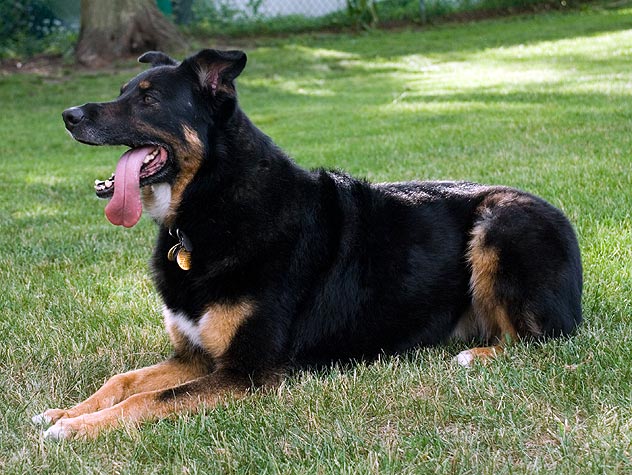Clumber Spaniel
Low-slung with heavy bones and a heavy head, the Clumber Spaniel is a slower-moving Spaniel breed. They were originally bred by the English to do nose work through thick underbrush. A straight and soft coat with feathering around the legs and chest gives them a fluffy appearance. They are good-natured, dignified, and pensive.
Breed characteristics carousel
Learn More
Need to Know
- Dog suitable for owners with some experience
- Basic training required
- Need to be aware of potential health issues
- Enjoys gentle walks
- Large dog
- Some drool
- Requires frequent grooming
- Chatty and vocal dog
- Welcomes everyone happily
- Generally friendly with other dogs
- Gets along with other pets with training
- Great family dog
- Needs a large yard, in suburban or rural areas
- Can be left alone occasionally with training
- AKC Registered Breed

Personality
Well-mannered at home, the Clumber Spaniel is a quiet and gentle giant. They can live in more urban settings due to this placid nature, although they thrive in rural or suburban settings. They are devoted, usually to one person.
Stocky and sturdy, the Clumber Spaniel breed is one of the oldest Spaniels. They were likely a crossbreed of the Alpine Spaniel and the Basset Hound, getting their name during the French Revolution from the Duke of Newcastle’s estate, Clumber Park. English nobility loved these slow-moving scent dogs, and they came to America in the late 1800s. There are likely only hundreds of Clumber Spaniels registered in the United States today, making them a rare breed.
Thoughtful and gentle despite their size, the Clumber Spaniel is a slower-moving breed, good for owners who like Spaniel traits but want a less spirited dog. They need plenty of exercise and training, but they are steady and reliable dogs that don’t get overly excited easily. They are ideal for families with older children given their size—and their capacity for drool and muddy paws.
Clumber Spaniels aren’t as exuberant as other Spaniels, but they do have stamina. They will enjoy exercising through long walks, scent work, and trotting off-leash. They should also be taught recall.
Owners don’t need a particularly large space for a Clumber Spaniel dog—but they will need a powerful vacuum and lots of drool rags. The dogs can collect water and debris after a walk very easily, so space for them to dry off is a good idea. Access to the outdoors, either in rural or suburban areas, is preferable.
The silky and straight coat of the Clumber Spaniel has feathering on the legs and chest. This can tangle easily, so grooming needs to happen frequently to prevent it. While they have relatively easy to maintain coats, they do shed and drool, so owners will need to be tolerant (and perhaps carry a drool rag with them). They dry quickly and mud can easily be brushed off.
Clumber Spaniel dogs love anything that requires them to sniff, but they’ll do it slower than other dog breeds. They enjoy scent work, working with their owners, and retrieving. A good recall, leash walking, and teaching them to swap are essential to a well-mannered dog.
Clumber Spaniel puppies can be enthusiastic, which might not work for families with small children. As adults, they are devoted and trustworthy members of the family.
The cost of a Clumber Spaniel from a breeder is significantly more than the cost of adopting one from a local shelter or rescue. The adoption fee usually covers additional items such as spaying or neutering, vaccines, and microchipping.

Learn more about feeding and caring for your Clumber Spaniel on Purina.
Did you know?
- Prince Albert owned seven Clumber Spaniels.
- Clumber Spaniels are seen in artwork as early as 1788.

